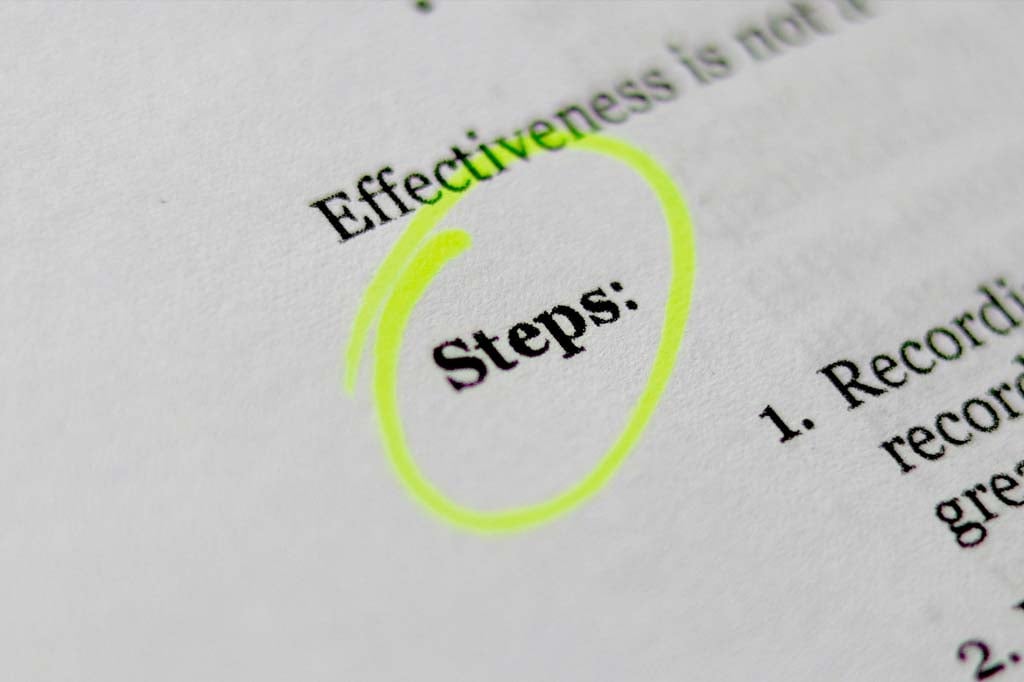Are you seeking guidance on how to file a patent application? You’ve landed in the perfect spot. Our guide simplifies the intricate steps involved in the patent application process into digestible, achievable actions. We’ll guide you through every phase needed to obtain a patent for your innovation—from the preliminary paperwork to the final submission—arming you with the essential knowledge to protect your intellectual property effectively.
How to File for a Patent: A Comprehensive Guide
In this comprehensive guide, you will learn the intricacies of the patent application filing process and how to navigate the complexities of intellectual property protection. Here’s what you can expect to gain:
- An understanding of the different types of patents available and how to determine which is most suitable for safeguarding your invention.
- Insights into the importance of detailed documentation and confidentiality, and practical steps to ensure your intellectual property remains secure during the patenting process.
- Strategies for conducting an effective patent search to verify the novelty of your invention, along with guidance on the decision-making process between provisional and non-provisional patent applications.
Determining the Type of Patent You Need
Embarking on the path to patenting requires an initial determination of the correct type of patent application that aligns with your invention. There are three principal kinds of patents: utility, design, and plant. Each class is tailored to safeguard different aspects of intellectual property and caters to varying forms of inventive work. Grasping these variances paves the way for aptly securing legal safeguards for your innovation.
Utility patents cater to inventions that introduce novel and useful processes, machines, manufacturing methods, or material compositions. They provide protection over how your invention works or functions—its functional elements—not its visual characteristics like a design patent. On the other hand, you may need a design patent application to protect the ornamental appearance or unique design of your invention. Lastly, there are plant patents, which are aimed to protect new varieties of plants reproduced asexually—that is, by means other than seeds—with exceptions being bacteria and tuber-propagated plants. As you consider protective measures for your creation, consider what aspects of your invention you are looking to protect.
For instance, if you’ve engineered a groundbreaking ergonomic chair, a utility patent application could protect the unique mechanical functionality and methods you’ve devised for adjusting the chair’s posture, while a design patent would shield the distinctive appearance of its sleek contours. This dual approach ensures that both the function and form of your innovative chair are legally safeguarded.
Crafting Your Patent Documentation
After identifying the appropriate type of patent, it is critical to thoroughly document every aspect of your invention. This extensive documentation serves as a strong foundation for a substantial patent application disclosure and accomplishes multiple objectives: confirming ownership and providing evidence to support your claim set—which delineates the scope of your legal protections in your application.
In order to maintain an accurate chronicle of your invention’s development, start by recording all pertinent details in a notebook with sequentially numbered pages including how the invention is conceived and the best modes of using it. Concurrently, compile all associated records within an encrypted digital storage system that utilizes password protection for security purposes. Vigilant record-keeping should extend to financial expenditures related to inventing. Preserve original purchase receipts meticulously. Have each entry in the lab book signed and dated not only by yourself, but also confirmed by two independent witnesses—actions which are paramount when affirming proprietary rights and underpinning both the inventive step and uniqueness necessary for achieving robust patent protection.
Maintaining Confidentiality Before Filing
Maintaining the confidentiality of your invention is essential until a patent application has been successfully filed and you are considered “patent pending.” This precaution ensures that your innovative creation isn’t subject to unsanctioned use or premature exposure, which could potentially compromise your own application and subsequent efforts to secure patents.
When you are in discussions about your invention with interested parties, such as potential investors or manufacturers prior to filing a patent, it’s imperative to have Non-Disclosure Agreements (NDAs) in place for protection. Although registered patent attorneys and agents are professionally obligated by legal and ethical codes to preserve the secrecy of information regarding an invention, taking active steps yourself is crucial in preventing any unauthorized dissemination of details concerning your invention.
Conducting a Comprehensive Patent Search
Conducting a comprehensive patent and prior art search is the subsequent phase in your patent journey. The goal is to check against existing patents and prior art to ensure the novelty of your invention. This step is crucial as it helps determine the patentability of your invention and can save you from unnecessary expenses and legal trouble down the road.
Start the patent search with a clear and detailed description of your invention. This description will guide the search for relevant patent searches, keywords, and concepts. Utilizing classification tools, such as the Cooperative Patent Classification system, can help you find patents within specific technological sectors relevant to your invention.
After identifying relevant patents, follow these steps to review each patent thoroughly.
- Review the patent’s drawings, specifications, and claims.
- Conduct an exhaustive patent search that extends beyond U.S. patents. Include foreign patent databases and non-patent literature.
- This comprehensive search will ensure a thorough understanding of prior art and increase your chances of patent approval.
Completing the Patent Application
After completing an exhaustive patent search, you’re ready to complete your patent application. This entails a series of critical steps that must be carefully navigated. You’ll need to decide whether to go for a provisional or non-provisional application, grasp the associated costs and paperwork involved, and utilize strategies for online submission—each phase demanding meticulousness and deliberate thought.
In our exploration of these phases, we aim to streamline the process and enhance your chances for a successful outcome in line with the stipulated procedures set by the patent examining authorities.
Provisional vs. Non-provisional Applications
When embarking on the patent application process, your initial decision will involve opting for either a provisional or non-provisional application.
Opting for a provisional patent application serves multiple purposes:
- It secures an early filing date;
- Achieves ‘patent pending’ status;
- Grants inventors additional time to perfect their invention; and
- Does not demand as extensive detail as required by a non-provisional application.
It is crucial to note, that following the submission of a provisional application, you have one year to submit a corresponding non-provisional application if you wish to benefit from the earlier provisional filing date, as established by your provisional claim.
Conversely, submitting a non-provisional patent application subjects it to thorough scrutiny by the United States Patent and Trademark Office (USPTO), which could culminate in acquiring an actual patent should all criteria be met. This type of application necessitates more comprehensive descriptions and pertinent illustrations, but provides stronger intellectual property safeguards compared with its provisional counterpart. The selection between going forward with either a provisional or non-provisional application hinges on specific needs and strategic considerations. Grasping the distinct advantages and obligations associated with each category can assist in arriving at an advised verdict.
Understanding Fees and Forms
The process of filing a patent application requires the payment of various USPTO filing fees, which are dependent on the type of application—provisional or non-provisional. Understanding these expenses is crucial for financial planning throughout the course of obtaining a patent, including post-grant maintenance.
Navigating the USPTO filing process and which filing documents are applicable can be overwhelming. It’s critical to use only the USPTO’s official forms when applying for your patent application. Adherence to regulations outlined by Patent Laws, Rules, Director’s Orders, and Notices is necessary to ensure that your filings are processed without delay.
It’s important not to forget that after securing your patent, you’ll need to continue paying maintenance or renewal fees periodically if you want to keep your patent active and enforceable for the term of your patent.
Online Filing Strategies
The USPTO endorses its Patent Center as the go-to resource for electronic submission and management of patent applications. Opting to file your patent electronically through this system allows you to prepare, upload, and pay all required filing documents and fees for your new application. Your application and all documents filed will be stored and viewable on your Image File Wrapper.
The functionality of the Patent Center encompasses several key features.
- It facilitates the electronic submission, not just of provisional and utility applications, but also permits various other types of correspondence related to patent application and maintenance fees of issue patents.
- You have the capability to populate forms needed during the application process directly on your computer which may be saved for future reference or use.
- It enables applicants to complete submissions online immediately without delay.
- It uses security measures, such as two-factor authentication, along with electronic witness signatures, which offers a secure yet user-friendly experience throughout your online patent application filing process.
Navigating the Examination Process
When you submit your patent application, it enters the examination phase. The duration of this stage can vary significantly, lasting 18-30 months after the initial filing date. A designated patent examiner will be assigned to substantively review your submission during this period. Should there be any grounds for rejection identified by the examiner, an Office Action will be issued detailing the grounds for rejection and the cited reference(s).
In response to such an Office Action, a comprehensive and targeted reply called an Office Action Amendment is necessary — one that addresses the grounds for rejections and arguments to traverse the rejection. This reply is your opportunity to clarify your invention’s novelty and usefulness, providing additional information or amendments that could be pivotal in overturning the examiner’s initial decision. It is a chance to engage with the patent office, through an Examiner Interview, and speak directly with your examiner on your application.
If you are able to overcome any cited references in an office action and prove the novelty of your invention, you will receive a Notice of Allowance. This notice is a significant milestone, indicating that your invention meets the patentability criteria and is on the verge of being granted and issued a patent. However, before the patent is officially issued, there is the matter of paying the required issue fees. These fees contribute to the cost of processing the patent and releasing the official certificate that confirms your legal rights as a patent holder.
Conversely, should negotiations with the patent examiner in your interview fail, you will receive a Final Office Action. It’s important to understand that there is recourse through an appeal process directly before the Patent Trial and Appeal Board (PTAB). This appeal process allows you to contest the examiner’s decision before a panel of administrative patent judges who will review your case anew. It provides a fresh perspective and a further chance to argue the merits of your invention and its patentability, with the hope of ultimately securing the patent rights you’ve worked so hard to achieve.
Leveraging Your Patent Pending Status
Once you’ve successfully submitted your patent application, you may immediately market, advertise, sell, and fund raise. Not only does it enhance a business’s image as innovative, but it also plays a key role in attracting investors and informs them that there are measures underway to safeguard your innovations. It essentially signals to potential competitors that once the patent is officially issued, any infringement could lead them into legal battles.
Your product or marketing materials can flaunt the ‘patent pending’ status with strategic benefits such as:
- deterring others from copying;
- gaining an upper hand during price negotiations or securing more favorable investment conditions;
- keeping market interest piqued and sustaining exclusivity by repeatedly updating ‘patent pending’ claims through new applications;
- laying down early roots in the marketplace; and
- bolstering opportunities for investments and partnerships especially when navigating as a small enterprise or start-up.
Protecting Your Patent Post-Grant
Kudos on securing your patent! Remember, the task of safeguarding your intellectual property doesn’t end with the grant. As a holder of a patent, it falls upon you to vigilantly oversee and take legal measures against any infringement. Enforcing a patent typically means engaging in legal battles to prevent others from making, using, distributing, importing, or selling what you’ve invented without authorization.
Consider licensing as an alternative strategy for protecting your patent rights. By doing so, you allow third parties to utilize your invention under certain terms, which can include paying royalties and adhering to territorial limits while retaining full ownership and control over the patented process or product.
For those small businesses, enterprises, and emerging companies, particularly adept at innovation, but new to the realm of patents, should pay keen attention to understanding how they can defend their hard-earned inventions using tools offered by patent law. Turning to resources such as advice from the trademark office could prove invaluable in these efforts.
Increase Your Chances of a Notice of Allowance By Working With A Registered Patent Attorney
Navigating the complexities of the patent process doesn’t have to be a solitary journey. Teaming up with a registered patent attorney can greatly increase your likelihood of obtaining a Notice of Allowance for your application. They are adept at steering you through and promptly settling the issue fee, which is critical in preventing your patent application from being deemed abandoned.
Enlisting the expertise of a registered patent attorney offers access to an array of informed strategies and insights within the various stages involved in securing a patent, including:
- Calculated timing for issue fee payments that aligns with business considerations;
- Understanding potential moves by competitors aiming to circumvent your patented claims; and
- Pre-grant strategic guidance concerning important decisions.
They offer knowledge about strategizing around when and how one might receive their Notice of Allowance after undergoing what could range between 9 months to over three years during examination procedures.
Such professional advice ensures not only well-informed decision-making throughout each step, but also assists in optimizing overall value derived from ultimately having obtained legal protection under one’s respective patents.
Summary
Embarking on the journey of securing a patent for your invention can be an intricate endeavor, but breaking down each phase makes it more manageable. It involves pinpointing the appropriate type of patent, meticulously preparing your documentation with confidentiality in mind, undertaking a thorough patent search to ensure novelty, carefully completing and submitting the application itself, and engaging in the examination process. Effectively utilizing your ‘patent pending’ status while safeguarding your intellectual property after grant is critical. Each segment plays a vital role in ensuring that your creative work gets the protection required by the law.
The path to obtaining a patent isn’t swift—it’s akin to running a long-distance race rather than dashing through short tracks. Persistence coupled with precise attention every step of the way pays off handsomely. Armed with sound counsel and knowledge about what lies ahead, you will find navigating this maze becomes far less daunting. It paves the way for transforming your groundbreaking concept into reality confidently—so get ready for some intense brainstorming and prepare yourself for this fulfilling venture towards legally cementing rights over our innovative contribution.
Frequently Asked Questions
How much does it cost to file a patent?
The cost of filing a patent can vary significantly depending on the approach you take and the type of application you file. Opting for a provisional patent application is typically more cost-effective in terms of legal fees and USPTO filing fees. If you choose to file a patent application yourself, these primary expenses are relatively low. However, should you decide to hire a patent attorney to assist with the process, the costs can increase substantially. The professional fees for an attorney to draft and file a provisional application are generally lower than those for a non-provisional patent application, which typically range from $8,000 to $15,000.
Can I file a patent myself?
Certainly. The process to file a patent is accessible to individual inventors and the Patent Office has established a way that aids those who choose to submit their own patent applications. Numerous inventors have historically taken advantage of this approach.
If desired, enlisting professional help is an alternative route you can take. Experts are available should you seek specialized support in filing your patent.
What are the 3 requirements needed to get a patent?
In order to secure a patent, the invention should meet criteria including being within statutory guidelines, possessing novelty, and demonstrating utility.
What are the 3 types of patents?
There are three distinct categories of patents: utility patents, which safeguard the functionality of an invention. Design patents, intended to secure the aesthetic aspect. And plant patents, which are granted for novel plant varieties.
Why is confidentiality important before filing a patent application?
It is crucial to keep your invention under wraps prior to filing a patent application in order to safeguard against any illicit utilization or revelation of the inventive concept, given that it remains unprotected until such time as the patent paperwork has been officially submitted.
Implementing secrecy agreements, such as non-disclosure agreements, is an effective strategy for ensuring the security of your invention throughout this period.




